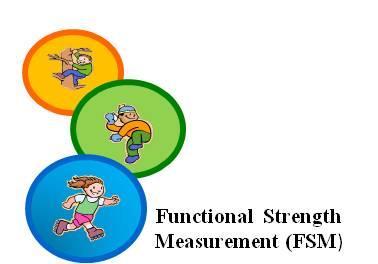about the FSM
Many disorders in childhood may lead to primary or secondary loss of muscle strength. Therefore validated ways of measuring strength in children is important. To measure strength often isometric force measurement are used such as the Hand-Held Dynamometry (HHD) and the scale of the Oxford Medical Research Counsel (MRC). However, these instruments measure localized strength and are inadequate to provide a reliable indication about functional usability of the generated force in real life situations. Between In 2007-20011 a new instrument to measure functional strength in children between 4-10 years has been developed: the Functional Strength Measurement (FSM).
In the period between 2007-2011 616 children are measured to obtain reference score. Students and teachers from the university of Master Peadiatric Physical Therapy (MPPT) from Avans+ in Breda, enabled the data collection.
The FSM
The FSM consists 8 items; 4 items for the upper extremity and 4 for the lower extremity. Some items measure the number of repetition in 30 seconds and some measure distance in centimetres.
It takes about 30 minutes to measure the functional strength with the FSM.

Psychometric properties
Intern Consistency
Cronbachs Alpha was calculated to determine the degree of internal consistency among the 8 motor items of the FSM. The Cronbach's Alpha is 0.74.
Reliability
The test-retest reliability (ICC) was also calculated (n=69) and ranged between 0.73 and 0.91 for the different items.
Validity
The concurrent validity was calculated using a comparison of the Hand Held Dynamometer and the FSM (n=266). For the upper extremities the Pearson correlation ranged between 0.58 and 0.67. For the lower extremities the Pearson correlation ranged between 0.45 and 0.66 fot the different items.
The divergent validity was calculated by comparing items of the FSM with items of the M-ABC2. Low correlations was found ( Pearson correlation 0.28 and lower).
